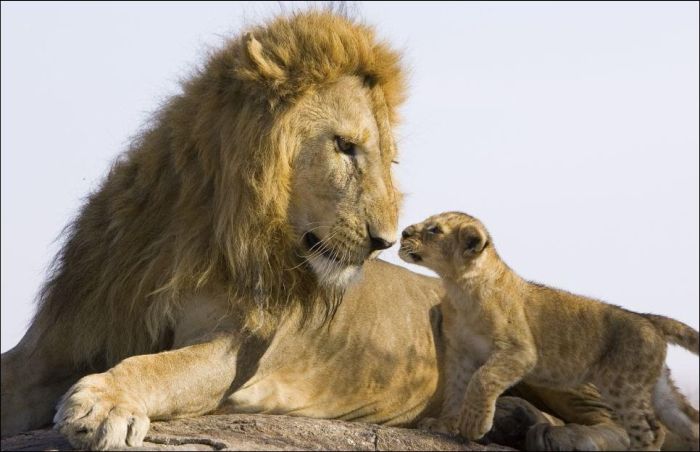|
|
Lion Cubs With A Family
|
Conservation of both African and Asian lions has required the setup and maintenance of national parks and game reserves; among the best known are Etosha National Park in Namibia, Serengeti National Park in Tanzania, and Kruger National Park in eastern South Africa. Outside these areas, the issues arising from lions' interaction with livestock and people usually results in the elimination of the former. In India, the last refuge of the Asiatic lion is the 1,412 km² (558 square miles) Gir Forest National Park in western India which had about 359 lions (as of April 2006). As in Africa, numerous human habitations are close by with the resultant problems between lions, livestock, locals and wildlife officials. The Asiatic Lion Reintroduction Project plans to establish a second independent population of Asiatic Lions at the Kuno Wildlife Sanctuary in the Indian state of Madhya Pradesh. It is important to start a second population to serve as a gene pool for the last surviving Asiatic lions and to help develop and maintain genetic diversity enabling the species to survive.
The former popularity of the Barbary lion as a zoo animal has meant that scattered lions in captivity are likely to be descended from Barbary Lion stock. This includes twelve lions at Port Lympne Wild Animal Park in Kent, England that are descended from animals owned by the King of Morocco. Another eleven animals believed to be Barbary lions were found in Addis Ababa zoo, descendants of animals owned by Emperor Haile Selassie. WildLink International, in collaboration with Oxford University, launched their ambitious International Barbary Lion Project with the aim of identifying and breeding Barbary lions in captivity for eventual reintroduction into a national park in the Atlas Mountains of Morocco.
Following the discovery of the decline of lion population in Africa, several coordinated efforts involving lion conservation have been organised in an attempt to stem this decline. Lions are one species included in the Species Survival Plan, a coordinated attempt by the Association of Zoos and Aquariums to increase its chances of survival. The plan was originally started in 1982 for the Asiatic lion, but was suspended when it was found that most Asiatic lions in North American zoos were not genetically pure, having been hybridized with African lions. The African lion plan started in 1993, focusing especially on the South African subspecies, although there are difficulties in assessing the genetic diversity of captive lions, since most individuals are of unknown origin, making maintenance of genetic diversity a problem.
|
|









